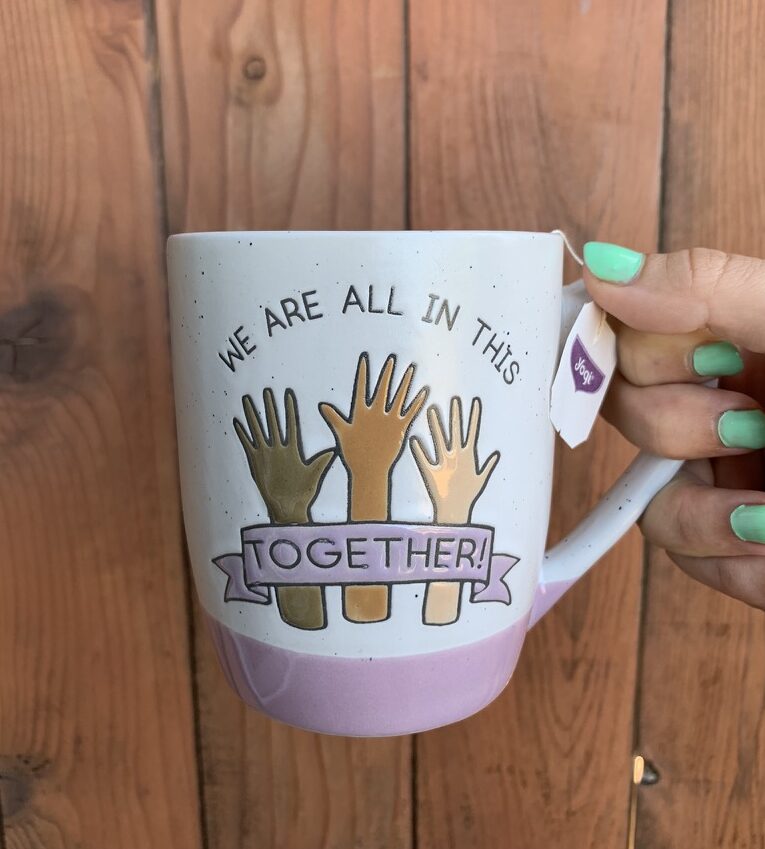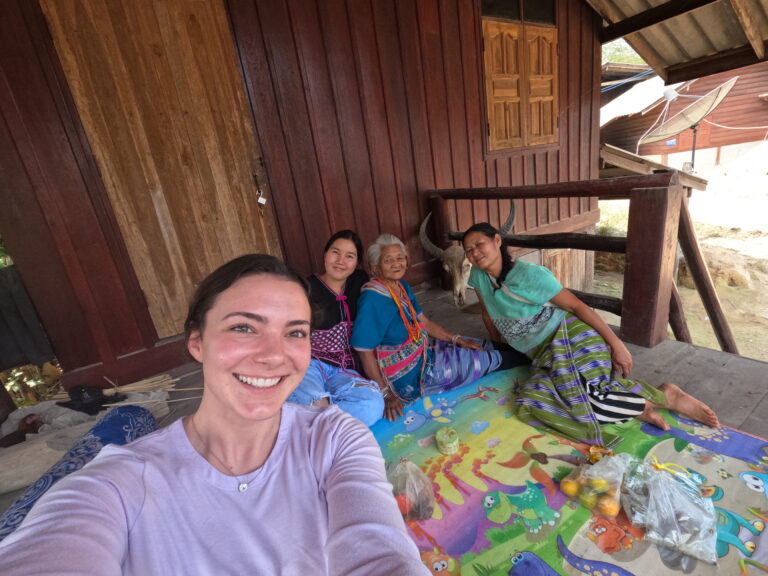Land of the free? The Roe v. Wade Overturn, What It Means, & Challenging Pro-Life Arguments
TW: Sexual assault, pregnancy, miscarriage, abortion, unsafe abortion methods, substance use and abuse
Oof. Today I’m going to be discussing a very real topic that is at the forefront of all our minds. It’s been harder to write than anything else I’ve written for a few reasons (which is why I haven’t posted in a few weeks.)
- I needed to allow myself to release the initial shock, anger, anxiety, and disappointment I felt over the Supreme Court’s recent decision.
- I wanted to pull together facts and write a piece that was calm, well-researched, and accurate. My intention is to educate and provide perspective, not to fight.
Where I stand
I’m pro-choice. I decided this a few years back. In my freshman year of college, I took two classes that helped me make this decision. One was called “Moral Problems” which was a philosophy class where we addressed the biggest moral problems in society today. It was extremely challenging, but because we read intense and deeply interrogative articles on both sides of each problem, I was able to make up my mind about how I felt about a lot of things.
Gun laws, abortion rights, gay marriage, sacrifices for the greater good… we even had to argue incest. We learned to look at all arguments and aspects on both sides, so I believe my views are fairly and accurately based on all the information. I also took a women and gender studies class. If that doesn’t get you fired up about women’s rights, then I don’t know what will.
Given my experiences here, I am going to address both sides of the argument and break apart the pro-life argument. But like I’ve said before, change doesn’t come when we yell at each other. It comes when we calmly speak with one another and address one another’s concerns openly. I really encourage you to keep reading regardless of what side of the fence you sit on, if I can’t convince you, I can at least give you some perspective.
The Facts
What is Roe v. Wade?
It’s super easy to see social media posts and click “repost.” Before reposting, I think it’s really important that we fully understand the information we are sharing. We hear Roe v. Wade a lot, but it isn’t always followed by an explanation of what was actually established.
In January of 1973, the U.S. Supreme Court ruled that it should not be up to the states to determine if abortion is legal and that under the entire country’s jurisdiction, it is a constitutional right. Back at that time, the argument was that outlawing abortion impeded the Fourteenth Amendment: “Nor shall any state deprive any person of life, liberty, or property, without due process of law.”
The aspect I don’t think people always know is that guidelines (based on how far along a pregnancy) were included in this decision. Pregnancy is divided into three trimesters. Under Roe v. Wade, in the first trimester, abortion was legal throughout the country. Individual states could place certain restrictions on abortion in the second trimester and could ban abortion in the third trimester. That is, unless the mother’s health and life were at stake.
At the same time as the Roe v. Wade overturn, the Supreme Court overturned Planned Parenthood v. Casey which was originally passed in 1992. In the late 1980s, Pennsylvania took action to require a 24-hour wait after a consultation, married women needed to tell their husbands, and minors needed parental consent. So, someone needed permission to make decisions about their own body and future. In 1992 care providers sued the state… and won! This decision stated that “restrictions on abortions are unconstitutional as they place an undue burden on a woman seeking an abortion before the fetus is viable.”
What does the overturn mean?
On June 24, 2022, this law was overturned, giving the power to decide the legality of abortion back to the states. This means the right to abortion is no longer considered a constitutional right. What this also means is that women no longer have the right to govern their own bodies.
So, the overturn does not automatically make abortion illegal…for everyone. But for a lot of people, it does! Unfortunately, making abortion illegal doesn’t do what some pro-lifers think it does. It doesn’t mean people will stop having abortions, it just means they won’t always be happening safely. I am lucky to be from a state where the governor has stated they plan to fiercely protect reproductive freedom, but this is not the case for many states.
For a country that places so much pride in its freedom, we seem to have a pretty backward way of going about it. This overturn directly restricts 50.52% of its people pretty heavily.
Reasons people may get an abortion
- They cannot afford to raise a child
- They can’t afford medical care during the pregnancy
- They can hardly support themselves
- Having a baby would hinder their ability to reach their goals in work, education, or care for other dependents
- They would have to be a single parent
- They have medical considerations that make pregnancy dangerous for them
- Their pregnancy is a result of being sexually assaulted
- They don’t want to bring a life into this world
- They aren’t ready for parenthood
- They have physical and mental health medical family history that they don’t want to pass down
- They’re in an abusive relationship
- They have addictions that would harm the fetus
- The fetus is not expected to survive
- Their place of work does not provide paid or adequate maternity leave
- They simply don’t want a child
…and I’m sure there’s more!
How abortions are often performed
Safe, legal abortions happen one of two ways during the first trimester.
- In-clinic
- A medical professional uses medical instruments and suction to remove the pregnancy
- This procedure takes ~10 minutes, but could take longer depending on how far along the pregnancy
- Out of clinic
- via abortion pill
- Works up to 11 weeks of pregnancy. Taken at home and it expels the pregnancy tissue in two pills.
- (after 1st tri) Dilation & Evacuation
- This is used for pregnancies later than 16 weeks.
- Includes more preparation of the cervix and a numbing medication or a shot in the abdomen
Serious medical problems for the woman after abortion are not common and the procedure is safe. One can return to regular activities the next day, though bleeding and cramping may last.
*In many cases, it can be difficult to find a care provider who will perform an abortion later than the 12th week of pregnancy.
The danger of taking this constitutional right away
This is just the beginning. Other rights could be at risk when we start seeing rights over bodily autonomy stripped. Abortions don’t stop. Unsafe abortions just become more common.
Methods people may use to perform unsafe abortions (trigger warning)
Examples include:
- drinking toxic substances like bleach
- inflicting direct injury to the vagina or near
- shoving a foreign object aka “coat hanger abortion” through the vagina
- intense physical injury: throwing themselves downstairs, punching the uterus, and inflicting trauma to the abdomen
- placing medication not intended for the area in the vagina
*These methods can cause uterine perforations, damage to reproductive organs, excessive bleeding, and death
Ways Pregnancy can negatively impact a woman
- Urinary tract infections
- Anemia
- Mental health
- Fatigue
- Pre-eclampsia
- Gestational Diabetes
- Weight gain
- Infections
- Nausea
- Anxiety
- Pre & postpartum depression
- Worsening of pre-existing chronic conditions
- Crippling medical bills
- Complications during child birth
- Giving birth is painful
- Potentially life-threatening
- Having to create a human against her will
Breaking down the main Pro-life arguments
1. The “Just don’t have sex if you can’t have a child” argument
Let’s stop pretending that teaching abstinence is a great preventative method. First, the attraction to sex and exploring new things is a natural human desire. It is not exclusive to people who are ready to make a lifelong commitment to parenthood. And if you want to sit there and say you’re only engaging in sexual intimacy for the purpose of reproduction… first of all, I don’t believe you. Second of all, that’s kind of sad.
Often, this method doesn’t work. Even if this method does work, it also instills a lifelong sense of shame, fear, and anxiety around something that is a completely normal part of human life that deserves no shame.
What we can do instead:
- focus efforts into safe sex education
- recognize that just because you received sex education doesn’t mean everyone did or that they received quality sex education.
2. The “Adoption is an option” argument
The points for this are often that there are a lot of people who want children but can’t conceive, or that someone else could give this baby a better life. And this is very true! Adoption can be a beautiful thing and most certainly can work out well.
But this is also true…
- finding a good fit or trusting someone else to raise a baby you brought into this world can be incredibly difficult
- Just because someone is adopted does not guarantee them a happy, healthy life. Someone else could give this precious baby an incredibly traumatic life full of drama and pain
- It’s not always about parenthood, but about pregnancy. Enduring pregnancy can be incredibly traumatic, painful, and harmful to the woman. Additionally, proper pregnancy medical care isn’t always accessible. A healthy pre- and post-pregnancy is not guaranteed.
- Pregnancy is incredibly hard on the body and can kill the mother and cause traumatic experiences. All for a human they don’t want to be making.
- Not everyone finds that perfect match and the baby ends up in the foster care system
- Often times, it’s the young children who get adopted. In 2020, over 50% of children who were adopted out of foster care were between the ages of 1 and 5. If that child doesn’t get adopted, they bounce around between foster homes, not all of them being safe and quality. Eventually, many age out of the system. Many people who age out of foster care experience, homelessness, incarceration, are unable to finish their education, or fall victim to human trafficking.
3. The “Just don’t be stupid” argument
Often people will say, “Don’t be stupid. Take birth control, use condoms, track your cycle, take Plan B, pull out, etc.” and those can be very effective preventative methods.
But this is also true…
- Accidents still happen! And not only accidents…
- Assaults happen too.
- Sexual assault can happen to anyone, and it does not make them stupid or weak or reckless.
- Some of those preventative measures cost money!
- Those things aren’t 100% effective
- There is a lack of sexual education. People aren’t always actively ignoring the safety precautions; they simply don’t know about them and are too embarrassed to ask due to the shame narrative around sex.
- Some people don’t want to be on birth control. It severely messes with a woman’s body and we are seeing this a lot more now.
- Who’s to say control over women’s bodies stops at abortion? Hold onto your contraceptives ladies. I wish I could say we are safe. But unfortunately, I have a feeling those will be brought up too…
4. The “Killing babies” Argument
Some believe life begins at conception, therefore abortion is killing a baby. I have also heard the argument that certain milestones in development make it a human life, such as when a heartbeat is detected.
But this is also true…
- There is no universal fetal viability, but typically a fetus is viable at about 24 weeks. In most states, restrictions on abortion begin after about 12 weeks (this was before the overturn). This means that at the point of a majority of legal abortions, the fetus is not yet capable of life outside of the womb.
- There are dangers to the woman’s physical and mental health that could result in loss of her life.
5. The “Against my religion” Argument
Many people believe that all life, starting at conception, has inherent value and that abortion is interfering with their God’s will. The antiabortion movement was started by catholic activists, also joined by non-catholic people of religion, protestants, Mormons, or orthodox Christians. These arguments often emphasize the fetus and deemphasize the woman. I understand that these people do truly believe they’re doing the right thing and also that not all people who belong to those groups are pro-life.
But this is also true…
- Not everyone follows the religions that preach this!
- If we want to be living in a free country, we need to allow people the freedom to practice whatever religion or non-religion that aligns with them. To make laws and decide constitutional rights based on one religion doesn’t make sense. Imagine we made laws based on a religion that forces you to get rid of a baby you do want. Wouldn’t you want the choice of whether or not to continue your pregnancy?
6. The “What that aborted baby could have been” Argument
I’ve heard people say “That aborted baby could have cured cancer and done this big thing or that.” Etc.
But this is also true…
- Sure, maybe. If the mother survives the pregnancy.
- Sure, maybe. If the mother or another caretaker is able to take care of it and support it financially to get the education
- Sure, maybe. But so could have the child-bearer if they hadn’t had to put their whole life on hold for a child they didn’t want.
**Through this argument and by taking away this right, we are placing more value of the potential of an unborn life over that of someone who is already living.
If you are pro-life consider:
- adopting
- fostering
- paying the bills of medical care for women through pregnancy and the first few years of a child’s life
- advocating for access to birth control
- advocating for laws that provide adequate financial support for maternity and paternity leave
- advocating for sex education
- advocating for gun laws
- donating to agencies that do this
If you aren’t prepared to do this, perhaps you want to reconsider your support for laws that restrict access to abortion.
Wrapping it up
The truth is, this is a rabbit hole. I could go on, and on, and on. Of course, there will be parts that I missed. But what I really wanted to do was look at the facts and provide some perspective on common pro-life arguments I hear. Ultimately if we want to live in a country that’s as free as we say we are, we need to be taking major action to protect lives that already exist here. In my opinion, energy is just being placed in the wrong areas. Human trafficking, gun laws, foster care, adoption agencies, homelessness, homeless youth—those are impacting lives that matter so much that we should be focusing on.
On a positive note
- Companies including but not limited to Microsoft, Apple, Yelp, Disney, Bumble, Netflix, Nike, and Starbucks are agreeing to pay for their employees to travel to get an abortion. The restrictions and limitations for each company in providing this money, I’m sure, vary and may face some complications when it comes to following through with this promise. However, at devastating times like this, we have to seek the good.
Lastly, if you don’t support abortion, don’t get one.
…and super lastly, I miss Ruth Bader Ginsburg. RBG!
Things you can do
- Donate (I linked organizations below)
- Vote
- Advocate
- Keep having conversations
- Follow organizations that provide information on these things
- Read up!
More resources to find information:
Abortion Laws after the Overturn State By State
National Network of Abortion Funds
Center for Reproductive Rights
American Civil Liberties Union
Sources
Bavis, Lauren. “’4th Trimester’ Problems Can Have Long-Term Effects On A Mom’s Health.” NPR, NPR, 24 Jan. 2019, https://www.npr.org/sections/health-shots/2019/01/24/686790727/fourth-trimester-problems-can-have-long-term-effects-on-a-moms-health#:~:text=The%20two%20major%20pregnancy%20and,illness%20that%20develops%20during%20pregnancy.
“Considering Abortion.” Planned Parenthood, Planned Parenthood Federation of America Inc., https://www.plannedparenthood.org/learn/abortion/considering-abortion.
Duffy, Clare, and Jennifer Korn. “These US Companies Will Cover Travel Costs for Employees Who Need an Abortion.” CNN, Cable News Network, 27 June 2022, https://www.cnn.com/2022/06/24/tech/companies-abortion-reaction/index.html.
“Fourteenth Amendment Citizenship, Equal Protection, and Other Post-Civil War Provisions.” Constitution Annotated, Congress.Gov, https://constitution.congress.gov/browse/amendment-14/.
“Governor Walz Takes Executive Action to Protect Reproductive Health Care in Minnesota.” Office of Governor Tim Walz and Lt. Governor Peggy Flanagan, State of Minnesota Government, 25 June 2022, https://mn.gov/governor/news/?id=1055-532109.
Haddad, Lisa B, and Nawal M Nour. “Unsafe abortion: unnecessary maternal mortality.” Reviews in obstetrics & gynecology vol. 2,2 (2009): 122-6. https://www.ncbi.nlm.nih.gov/pmc/articles/PMC2709326/
History.com Editors. “Planned Parenthood v. Casey.” History.com, A&E Television Networks, 24 June 2022, https://www.history.com/topics/womens-rights/planned-parenthood-v-casey.
Holland, Jennifer L. “Abolishing Abortion: The History of the Pro-Life Movement in America” The American Historian, Organization of American Historians, https://www.oah.org/tah/issues/2016/november/abolishing-abortion-the-history-of-the-pro-life-movement-in-america/#fn9.
“In-Clinic Abortion.” Planned Parenthood, Planned Parenthood Federation of America Inc., https://www.plannedparenthood.org/learn/abortion/in-clinic-abortion-procedures
“Pregnancy Complications.” Centers for Disease Control and Prevention, Centers for Disease Control and Prevention, 4 Apr. 2022, https://www.cdc.gov/reproductivehealth/maternalinfanthealth/pregnancy-complications.html.
Ryman, Hana M., and J. M. Alcorn. “Establishment Clause (Separation of Church and State).” The First Amendment Encyclopedia, Middle Tennessee State University, 2009, https://www.mtsu.edu/first-amendment/article/885/establishment-clause-separation-of-church-and-state.
Shivaram, Deepa. “Roe Established Abortion Rights. 20 Years Later, Casey Paved the Way for Restrictions.” NPR, NPR, 6 May 2022, https://www.npr.org/2022/05/06/1096885897/roe-established-abortion-rights-20-years-later-casey-paved-the-way-for-restricti.
The Annie E. Casey Foundation. “Child Welfare and Foster Care Statistics.” The Annie E. Casey Foundation, 16 May 2022, https://www.aecf.org/blog/child-welfare-and-foster-care-statistics.
The Editors of Encyclopaedia Britannica. “Roe v. Wade.” Encycloaedia Britannica, Encycloaedia Britannica, Inc., 24 June 2022, https://www.britannica.com/event/Roe-v-Wade.
“The World’s Abortion Laws.” Center for Reproductive Rights, Center For Reproductive Rights, https://reproductiverights.org/maps/worlds-abortion-laws/?country=USA.
Weigel, Gabriela, et al. “Understanding Pregnancy Loss in the Context of Abortion Restrictions and Fetal Harm Laws.” KFF, Kaiser Family Foundation, 4 Dec. 2019, https://www.kff.org/womens-health-policy/issue-brief/understanding-pregnancy-loss-in-the-context-of-abortion-restrictions-and-fetal-harm-laws/.
“When Is It Safe To Deliver Your Baby?” University of Utah Health, https://healthcare.utah.edu/womenshealth/pregnancy-birth/preterm-birth/when-is-it-safe-to-deliver.php.
*this information is accurate as of 7/19/2022.







